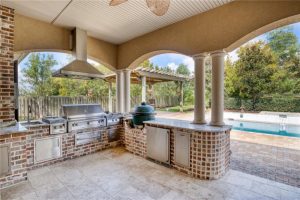New Orleans Moves Forward with Transformative Riverfront Park Project
The long-anticipated vision for transforming the Mississippi Riverfront into a continuous expanse of public parks is making significant strides. The New Orleans City Council has approved a $15 million investment toward the redevelopment of two historical wharves located in the French Quarter and Marigny. This funding, derived from city bond resources, constitutes half of the total projected cost, with the remaining balance provided by the Audubon Nature Institute, which is spearheading the project.
This ambitious initiative aims to convert a 0.3-mile stretch of the riverfront into a vibrant green space adorned with lawns, gardens, concession stands, and various recreational areas. It is strategically positioned between the developed regions of the upper French Quarter and the Marigny and Bywater neighborhoods. Once complete, the project will create 2.25 miles of continuous riverfront parkland, bridging these historic areas with accessible and engaging outdoor spaces.
Nathan Chapman, president of the Vieux Carre Property Owners, Residents, and Associates, expressed the community’s anticipation and support for this transformative project, highlighting its potential to enhance the quality of life and environmental beauty of the area.
The redevelopment focuses on the wharves at Esplanade Avenue and Gov. Nicholls Street, structures with rich histories dating back to before the 20th century. Initially, the Audubon Institute planned to shoulder the financial burden of this project alone. However, the escalating costs, exacerbated by the pandemic, led to a request for municipal support. Mayor LaToya Cantrell pledged to back the project last year, culminating in the recent allocation of funds.
Despite this significant step forward, various details remain to be finalized, including updated designs, budget forecasts, and construction timelines from the Audubon Institute. Laurie Conkerton, Audubon’s chief administrative officer, has indicated that these critical components are expected to be completed and approved within the upcoming month.
One of the unresolved issues includes the future management and maintenance of the site post-construction, especially considering the estimated $1.5 million annual cost associated with these responsibilities. Discussions have been held with the French Market Corp., which has shown interest in overseeing the site, though no formal agreement has been reached.
This riverfront project is part of a broader effort to revitalize New Orleans’ downtown riverfront from industrial use to pedestrian-friendly spaces. This effort began approximately fifty years ago with the development of Woldenberg Park and the Moonwalk promenade, enhancing the accessibility and enjoyment of the riverfront for both residents and visitors.
Originally, the site’s development plans included more commercialized elements, such as a Ferris wheel and amphitheater. However, following feedback from local communities, the plans have been revised to prioritize open green spaces and public amenities, garnering widespread approval from the neighborhoods affected.
As the city prepares to showcase these new developments by the next year’s Super Bowl, the project represents a significant investment in public spaces and urban greenery, aiming to provide residents and visitors with a continuous, scenic stretch along the Mississippi River, enhancing New Orleans’ unique landscape and cultural heritage.




